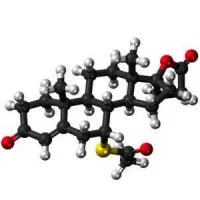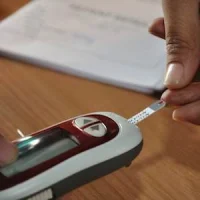The combination of two commonly used diuretics, each at half dose, can significantly reduce blood pressure without the side-effects caused by full doses of either alone, researchers from the PATHWAY 3 study have found. The findings, reported at ESC Congress 2015, “support first-line use of this combination in patients requiring diuretic therapy for hypertension”.
“The British Hypertension Society investigators will be recommending this combination,” said the study’s lead investigator Morris J. Brown, FMedSci, from the University of Cambridge, in Cambridge, UK.
“That matched doses of the two classes of diuretics could neutralize undesirable effects while potentiating the desirable is an important discovery.”
Thiazide diuretics such as hydrochlorothiazide (HCTZ) have been first-line treatment for hypertension for many decades, but their usage has declined because of concerns that they increase the risk of diabetes, explained Dr. Brown.
A leading hypothesis has been that this risk is due to depletion of potassium by thiazides. Potassium-sparing diuretics such as amiloride offer a potential solution, but theoretical risk of high potassium levels requires increased monitoring.
The combination of both diuretics at lower than normal doses can “neutralize” these potassium changes while at the same enhancing sodium excretion at two different targets in the kidneys (which the researchers call “natriuretic synergism”), thus reducing blood pressure more than either diuretic can do alone.
“It is probable therefore that it is the prevention of potassium depletion, combined with effective blood pressure reduction, which underpins the success of amiloride-HCTZ in the present study,” they noted.
PATHWAY-3 investigated this in 399 obese, hypertensive patients (mean age 61-63 years) who had an indication for diuretic treatment, and at least one additional component of the metabolic syndrome.
Patients were randomized to receive either amiloride 10 mg alone (n=132), HCTZ alone 25 mg (n=134) or a combination of both at half dose (n=133) for 12 weeks, followed by another 12 weeks at double the dose for all groups.
For the primary endpoint, which was the change from baseline in an oral glucose tolerance test (OGTT), there was a significant difference between the amiloride and HCTZ groups, with glucose levels rising in the latter, and dropping in the former. The average difference in blood glucose levels between the two groups was 0.55 mmol/L (P=0.009) over the study period.
In contrast, blood glucose levels remained unchanged in patients on the combination regimen, with a significant difference from levels in the HCTZ group (0.42 mmol/L; P=0.048).
The secondary endpoint of blood pressure control was acceptable and similar in both single drug arms, with a drop of 14.7 mmHg in the amiloride group and 14.0 mmHg in the HCTZ group.
However, the anti-hypertensive impact was greatest in the combination group, with an additional drop of 3.4 mmHg compared to the HCTZ group (P=0.007).
“Our study shows that amiloride itself is a very good drug – at least as effective as HCTZ; and that combining a half-dose of it with half-dose of HCTZ is a ‘win-win’ - producing better blood pressure, lower glucose and no change in potassium,” said Dr. Brown.
This trial, and PATHWAY-2, being presented in the same Hotline session, are part of the PATHWAY programme of trials in Hypertension undertaken by academic investigators within the British Hypertension Society.
Source: ESC
Image Credit: ESC










